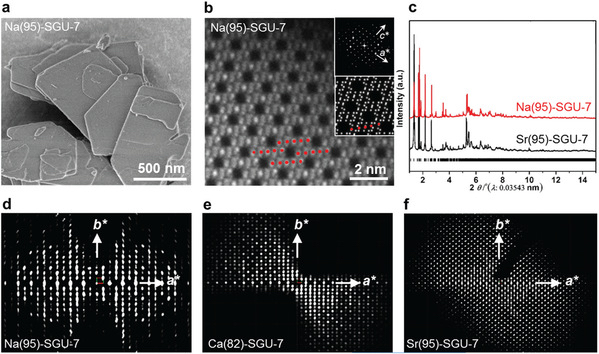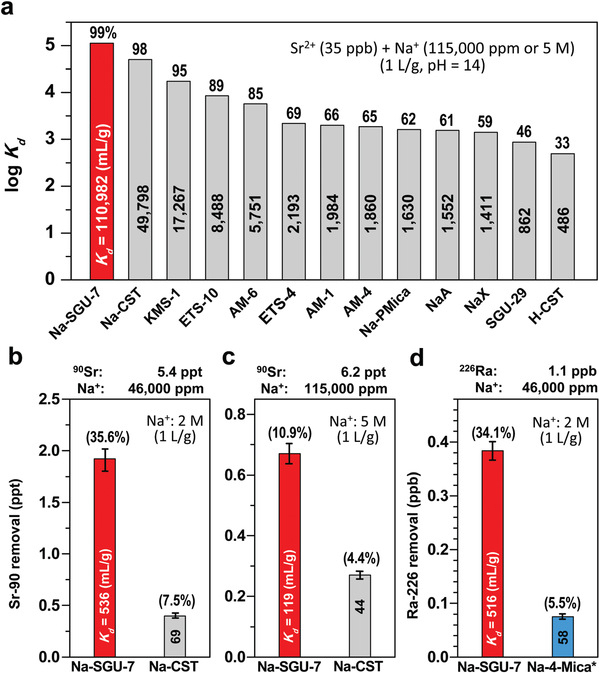SPST scientists Professor Osamu Terasaki, Dr. Peter Oleynikov, Dr. Alvaro Mayoral and Dr. Ma Yanhang, have collaborated with Professor Kyung Byung Yoon to report a new layered vanadosilicate for removal of 90Sr from highly Na+-rich liquid nuclear waste. The paper was published in Energy & Environmental Science with the title of “Removal of 90Sr from highly Na+-rich liquid nuclear waste with a layered vanadosilicate.”
Transition-metal (TM) silicates show many characteristic chemical features especially on selective absorption of a certain molecule or ion-exchange together with their large capacities, and catalytic performances. The scientists solved their complicated structures such as ETS-10 (TM: Ti), AM-6 (TM: V), and SGU-20 (TM: Cu) by using electron microscopy (EM) combined with powder X-ray diffraction (PXRD).
New vanadosilicate (TM: V) SGU-7 was synthesized long time ago and its interesting ion-exchange feature was found by Professor KB Yoon and his group at Sogang University in Korea. However, the extremely complext structure of the plate shape crystal morphology prevented a structure analysis by EM & PXRD, and understanding the origin of chemical functions was impossible.
Three-dimensional electron-diffraction tomography (3D-EDT) led to a breakthrough and gave essential structure features. SGU has layered structure-like clays that are very thin along b axis and with a layer in ac plane. Using the newly installed GrandARM300F in the Centre for High-resolution Electron Microscopy (CℏEM) at SPST, scientists were able to confirm extreme unique and different structural features from clays, with a finite length of –V–O–V– linear chain with five V atoms and large pores running parallel to [101] in the layer and along b-axis, respectively.
Moreover, the scientists showed SGU-7 as the best candidate for removing 90Sr even in harsh conditions, and cleared ion-exchange process that Sr2+ ions replace Na+ in the layer first and then occupy the sites between layers changing space group from P121/a1 to C12/m1. The final atomic structures were refined against synchrotron powder XRD data obtained from samples placed in glass capillaries collected at ESRF in France.
Read more at: https://pubs.rsc.org/en/content/articlelanding/2019/ee/c8ee03302a

SEM, HAADF images, synchrotron PXRD pattern and 3D EDT data of SGU-7

Adsorption of Sr and Na ions using SGU-7

